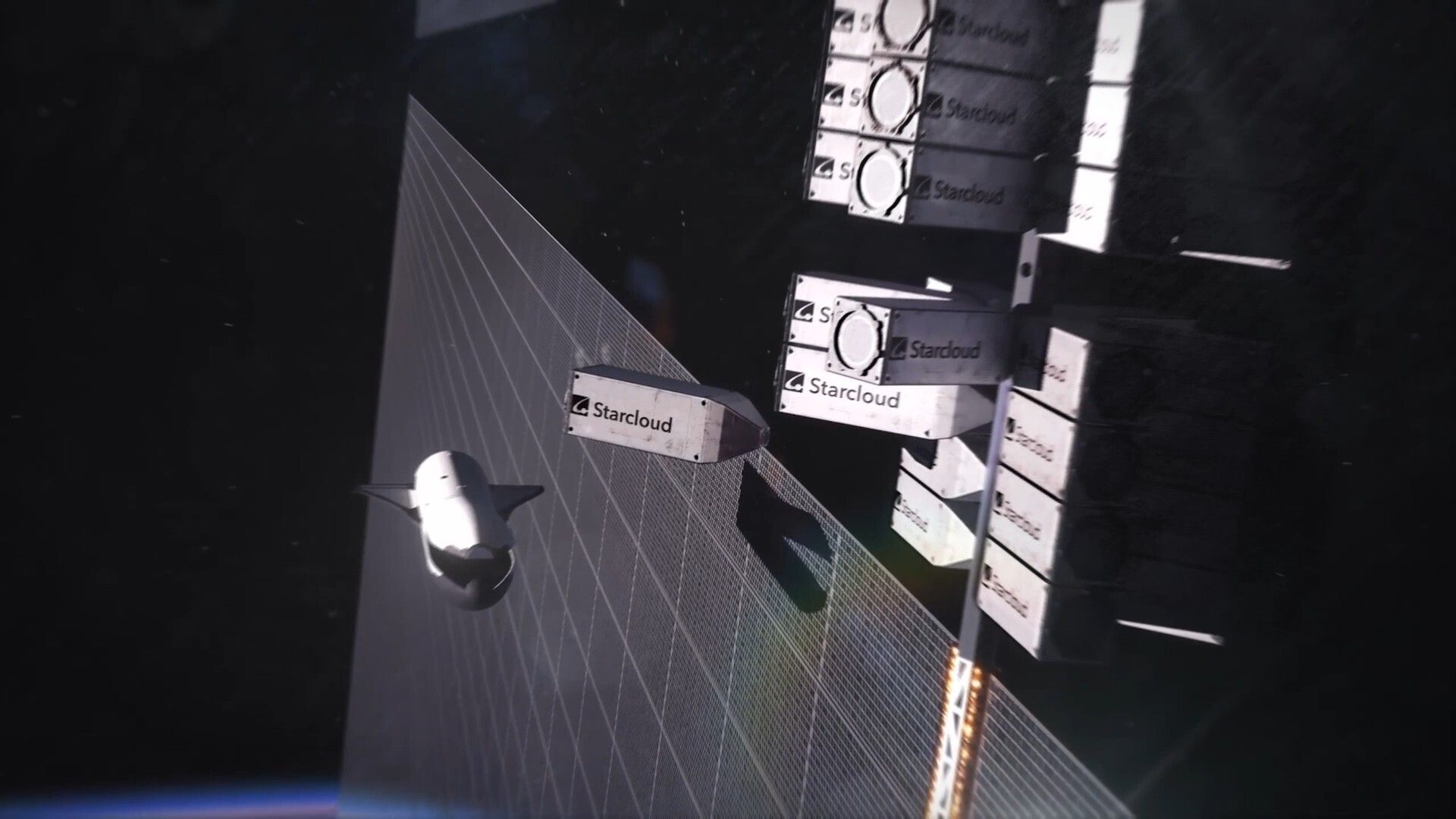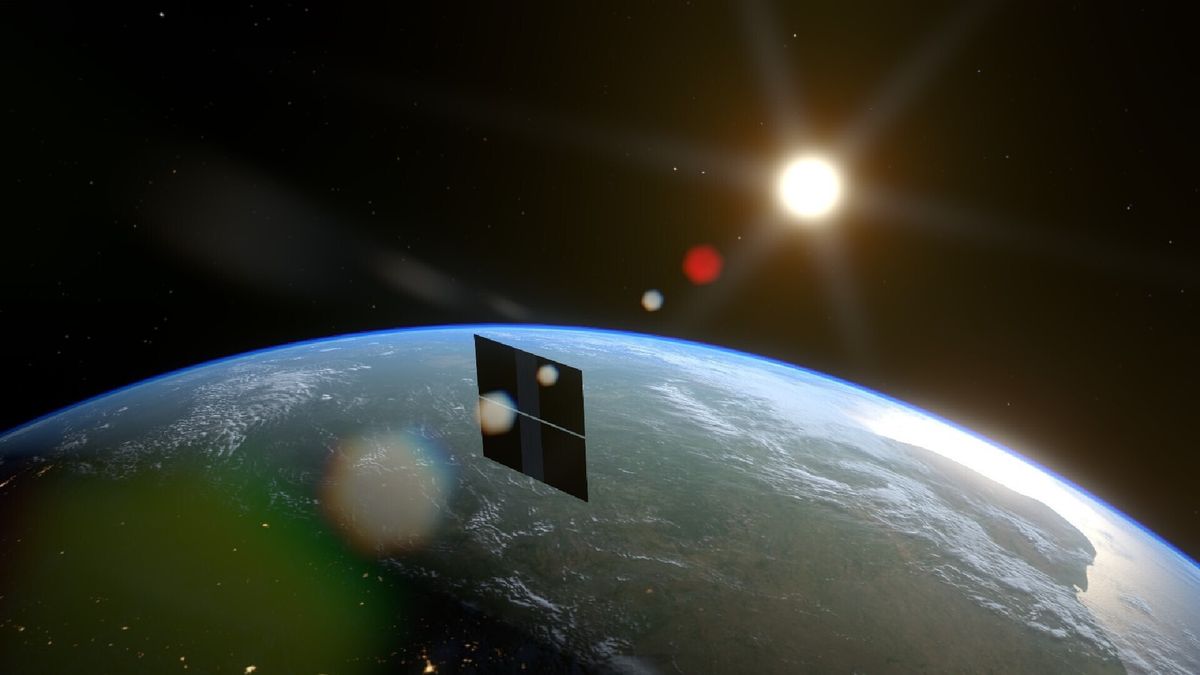🛰️ An NVIDIA supercomputer in orbit for a historic first
Follow us on Google News (click on ☆)
The NVIDIA H100 graphics processor, one hundred times more powerful than anything that has flown in space so far, will be onboard the Starcloud-1 satellite. The latter is scheduled to launch this November aboard a SpaceX Falcon 9 rocket.
Starcloud, based in Redmond, Washington, is using this mission to evaluate how data processing can function in the space environment. This is the first step in an ambitious project to build large-scale computing infrastructure in orbit.

Project for a 5-gigawatt orbital data center with solar panels and cooling system 4 kilometers (2.5 miles) wide.
Credit: Starcloud
Moving data processing to space could reduce the environmental impact of growing computing needs on Earth. Data centers consume enormous amounts of electricity and water, putting pressure on local resources. They also generate noise and contribute to greenhouse gas emissions that warm the climate. In orbit, energy and cooling would be easier to obtain, and potential noise wouldn't bother anyone. Philip Johnston, co-founder and CEO of Starcloud, stated in a release that space offers nearly unlimited, low-cost renewable energy.
For data centers to be established in space, launch costs must decrease significantly. Starcloud estimates that computing will become cost-effective when SpaceX's Starship rocket is fully operational, likely in the early 2030s. Johnston predicts that in ten years, almost all new data centers will be built in space. Meanwhile, the Starcloud-1 satellite will test the basics of orbital processing by analyzing data from Earth observation satellites to quickly provide information to ground users.
High-resolution optical and radar images contain enormous amounts of pixels, forcing satellites to transmit massive datasets to Earth. Ground stations are not always available and bandwidth is limited, often causing delays. Processing data in orbit would eliminate some of these bottlenecks, as the best images would be identified directly in space and sent during the first pass over a ground station. The Starcloud-1 satellite will also run Google's open language model Gemma, another major space first.

Depiction of the Starcloud satellite orbiting near the terminator line, between day and night.
Credit: Starcloud
Johnston emphasized that Starcloud must be competitive with workloads executable in a ground-based data center, and the NVIDIA H100 graphics processor is by far the highest performing for Artificial Intelligence training, fine-tuning, and inference. If all goes well, the company will launch more powerful satellites in the coming years, testing even more powerful NVIDIA graphics processors, including the Blackwell platform, which will offer further improvement of up to ten times.
Orbital data centers: a new computing frontier
Orbital data centers represent a major advancement in how we manage information. By placing these infrastructures in space, we can leverage abundant solar energy and the vacuum of space for cooling, thereby reducing dependence on limited Earth resources.
These facilities could operate continuously, benefiting from permanent sunlight possible in certain orbits. Passive cooling in the vacuum of space eliminates the need for energy-intensive air conditioning systems, which improves overall energy efficiency.
The space location also avoids terrestrial constraints such as land availability, strict environmental regulations, and impact on local communities. This paves the way for almost unlimited expansion of computing capacity.
However, this approach requires significant technological advances, particularly in equipment reliability in the hostile space environment and securing data transmissions over long distances.